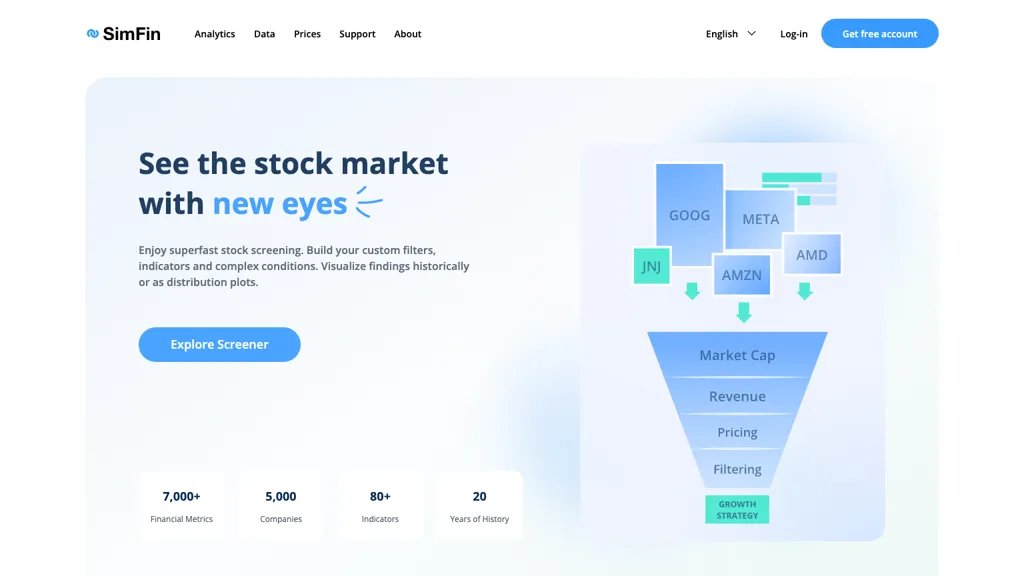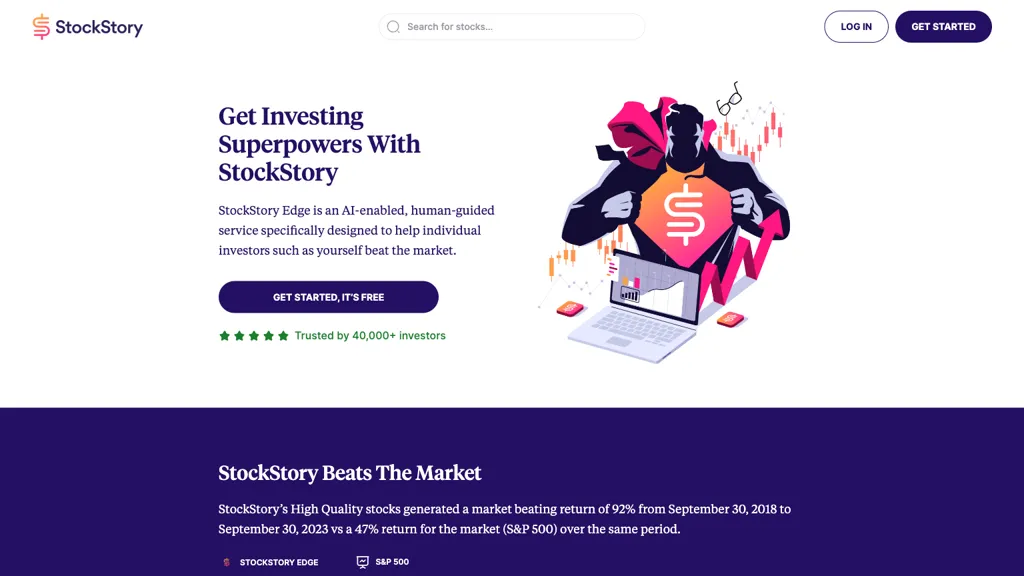When you are evaluating AI trading platforms that predict/analyze markets, market coverage is a key aspect to consider. It determines what assets and markets are readily available. If you choose a platform with extensive coverage, you are able to diversify your portfolio and take advantage of global opportunities. It is also possible to adjust to various trading strategies. Here are the top 10 tips to assess the market cover of these platforms.
1. Evaluate Supported Asset Classes
Stocks: Ensure your platform is compatible with major stock exchanges such as NYSE, NASDAQ LSE and HKEX, and that it includes mid, small and large caps.
ETFs: Make sure that the platform provides a variety of ETFs to offer diversified exposure across different sectors, themes, and regions.
Futures and options. Check to see whether your platform has derivatives including options, futures or other leveraged instrument.
The commodities and forex. Check if the platform offers forex pairs as well as base and precious metals, energy-related products, and agricultural goods.
Cryptocurrencies Make sure the platform supports popular cryptocurrencies like Bitcoin, Ethereum, and altcoins.
2. Make sure you check the area of coverage
Global markets: The platform should cover major global markets including North America and Europe, Asia-Pacific and emerging markets.
Regional focus: Verify whether the platform is specialized in particular areas or markets that are aligned with your trading interests.
Local exchanges. Find out if the platform supports exchanges regional or local to your area.
3. Assessment Real-time against. Delayed data
Real-time Data: Be sure that the platform provides real-time data to trade, and for making timely decisions.
Delayed data: Check if delayed data is available for free or at a reduced cost, which may suffice for investors who are looking to invest long-term.
Data latency. Examine whether your platform reduces the latency of real-time data feeds.
4. Review the Historical Data available
The depth of the historical data: Ensure the platform offers vast historical data (e.g. 10, 10+ years) to backtest and analyze.
Check for granularity. Historical data may include daily, intraday and weekly granularity.
Corporate actions: Examine to determine if the data has been recorded in the past. Dividends or stock splits all other corporate actions should be included.
5. Examine Market Depth and Order Book Information
Level 2 data: Make sure that the platform offers Level 2 data (order book depth) to facilitate price exploration and execution.
Check the bid-ask ranges to make sure you are getting the most accurate price.
Volume data - Check if the platform contains detailed volume information for analyzing market activities and liquidity.
6. Review the your coverage of Indices & Sectors
Major indices - Ensure your platform supports major indices, such as the S&P 500 (e.g. NASDAQ 100 or FTSE 100), for benchmarking using indexes.
Sector-specific data to perform a specific analysis, verify whether the platform contains information for specific industries (e.g. technology, health care, technology).
Custom-made indices: Find out if the platform allows creating or tracking custom indices based on your criteria.
7. Assess the impact of integration with News and Sentiment
Feeds for news: Make sure the platform incorporates real-time feeds of news from reputable sources, such as Bloomberg and Reuters, for market-moving event.
Utilize the tool's sentiment analysis using information from social media, news or any other source.
Event-driven strategy: Verify that the platform is compatible with the use of event-driven trading strategies (e.g. announcements of earnings, economic reports).
8. Make sure you are aware of the Multimarket Trading Capabilities.
Cross-market trading: Make sure the platform allows trading across a variety of markets and asset classes from a single interface.
Currency conversion: Verify if the platform can handle multi-currency accounts and automated currency conversion for international trading.
Support for time zones of different times: Make sure your platform is able to trade on global markets in different time zones.
9. Review the coverage of different data sources
Alternative data - Examine to see if there are alternative sources of data that can be integrated into the platform (e.g. web traffic, satellite imagery, or credit card transactions). This will provide you unique insight.
ESG data. Check if the platform is stocked with socio-economic, environmental and governance data for socially accountable investing.
Macroeconomic Data: Make sure whether the platform contains macroeconomic indicators such as GDP, inflation and interest rates.
Review Customer Feedback and Market Reputation
User reviews: Look for reviews from users to gain a better understanding of the platform.
Check for the platform's industry reputation. This includes awards and recognition by experts in the area.
Case studies: Look for cases studies, testimonials and other information that highlights the platform's effectiveness on specific market segments or asset types.
Bonus Tips
Trial period: Use an unpaid trial or demo to evaluate the market coverage of the platform and data quality.
API access: Verify if the platform's API allows accessing market data programmatically for custom analysis.
Customer Support: Make sure that the platform can offer support for any data-related or market-related problems.
Follow these tips to evaluate the market coverage provided by AI stock trading platforms. Choose a platform with access to the market, data and tools that you need for successful trading. A broad market coverage will allow you to diversify and expand the possibilities of your portfolio. It also helps you adapt to market changes. Take a look at the best ai for stock trading info for site advice including ai for stock trading, ai investing, ai for stock predictions, ai for stock trading, best ai stock, ai stock market, stock ai, ai investing app, ai trade, chatgpt copyright and more.

Top 10 Ways To Assess The Reputation And Reviews For Ai Stock-Predicting And Trading Platforms.
In the case of AI-powered platforms for trading and stock predictions It is essential to examine their reputation as well as reviews. This will ensure that they are reliable, trustworthy, and effective. Here are 10 top tips for evaluating their reputation and reviews.
1. Check Independent Review Platforms
Read reviews of reliable platforms such as G2, copyright, and Capterra.
What is the reason? Independent platforms permit users to offer honest feedback.
2. Examine testimonials from users as well as case studies
User testimonials or case studies on the website of the platform, and also on third-party sites.
What they do: They give insight into real-world performance as well as user satisfaction and the like.
3. Examine Expert Opinions and Industry Recognition
Tip. Verify that the platform is recommended or reviewed by experts in the industry, financial analysts, reputable magazines or other publications.
Expert endorsements are a great method to increase credibility and trustworthiness to a platform.
4. Social Media Sentiment
Tip Monitor social media sites (e.g. Twitter. LinkedIn. Reddit.) to learn what others are talking about and how they feel about it.
The reason: Social media provides an unfiltered view of trends and opinions in the world of social media.
5. Verify compliance with legal requirements
Make sure that your platform is in compliance with the regulations governing financial transactions (e.g. SEC, FINRA) as well as privacy regulations (e.g. GDPR).
Why: Compliance helps ensure the platform runs legally and ethically.
6. Transparency is a crucial element in performance metrics
Tip: Assess whether the platform offers transparent performance metrics (e.g., rate of accuracy, ROI, backtesting results).
Transparency can build trust, and also allows users to evaluate the effectiveness of a system.
7. Check out the Quality of Customer Support
Read the reviews to get information about customer service and its efficiency.
Why: Having reliable support is key to resolving problems with users and ensuring an enjoyable overall experience.
8. Check for Red Flags in Reviews
Tips Look for complaints that are repeated. They could be due to unsatisfactory performance, hidden costs or lack of updating.
The reason: A pattern of consistently negative feedback can indicate problems with the platform.
9. Evaluation of User and Community Engagement
Tips: Check whether the platform is engaging with users often and has a vibrant community.
The reason: Strong communities show the satisfaction of users and their continued support.
10. Check the company's track record
Explore the past performance of the company performance, its management, and the performance of the financial technology industry.
Why: A proven track records increases confidence and trust on the platform.
Compare Multiple Platforms
Compare the ratings and reputations of the various platforms to figure out which one is the most appropriate for your requirements.
Following these tips It is possible to evaluate and review the reputations and opinions of AI-based software for trading and stock prediction, ensuring that you choose the most reliable and effective solution. See the top rated ai in stock market hints for blog advice including ai in stock market, ai options, chart ai trading, chart analysis ai, ai in stock market, ai stock prediction, invest ai, trading ai tool, best ai stocks, ai stock predictions and more.
